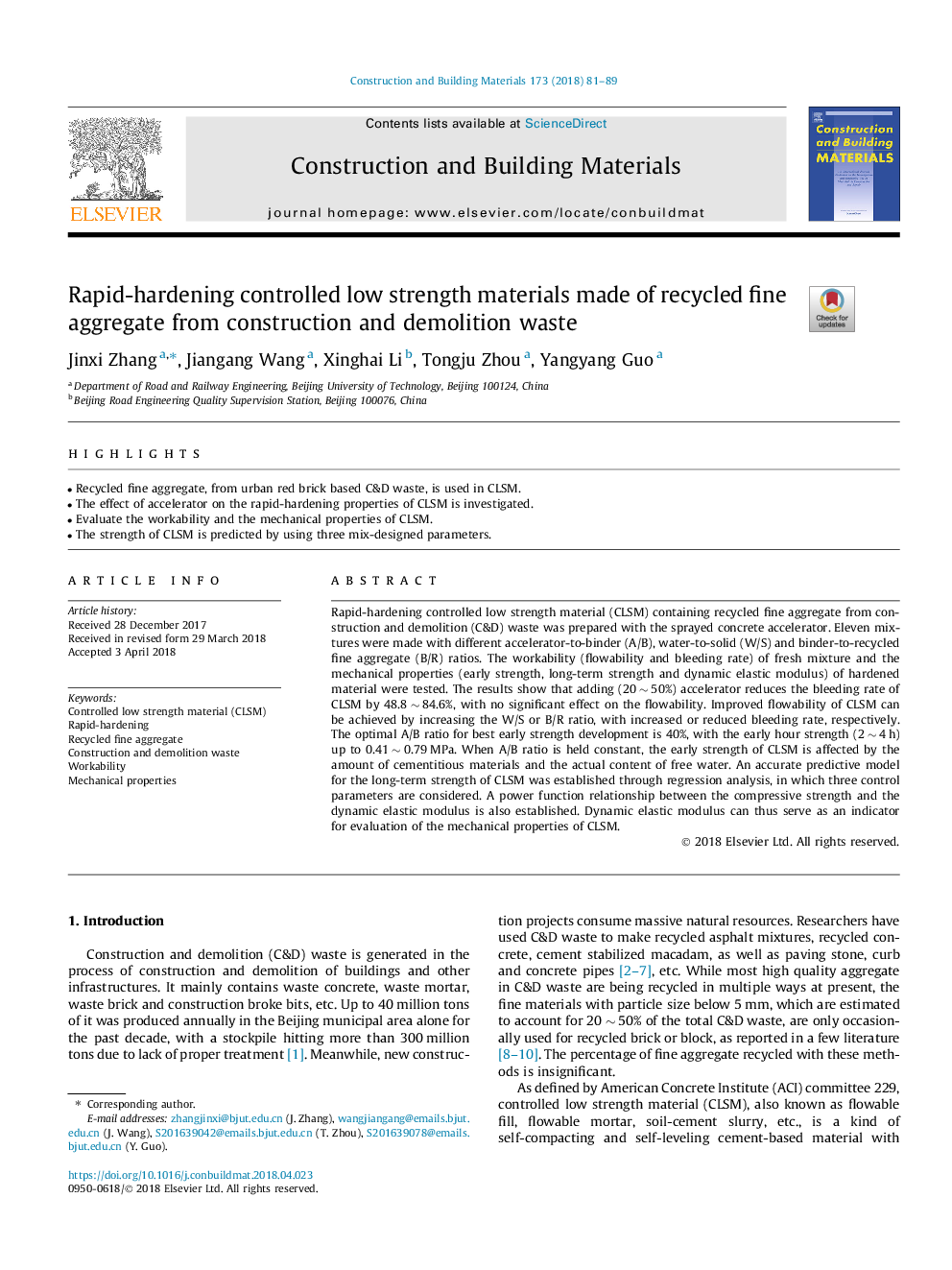| Article ID | Journal | Published Year | Pages | File Type |
|---|---|---|---|---|
| 6713509 | Construction and Building Materials | 2018 | 9 Pages |
Abstract
Rapid-hardening controlled low strength material (CLSM) containing recycled fine aggregate from construction and demolition (C&D) waste was prepared with the sprayed concrete accelerator. Eleven mixtures were made with different accelerator-to-binder (A/B), water-to-solid (W/S) and binder-to-recycled fine aggregate (B/R) ratios. The workability (flowability and bleeding rate) of fresh mixture and the mechanical properties (early strength, long-term strength and dynamic elastic modulus) of hardened material were tested. The results show that adding (20â¯â¼â¯50%) accelerator reduces the bleeding rate of CLSM by 48.8â¯â¼â¯84.6%, with no significant effect on the flowability. Improved flowability of CLSM can be achieved by increasing the W/S or B/R ratio, with increased or reduced bleeding rate, respectively. The optimal A/B ratio for best early strength development is 40%, with the early hour strength (2â¯â¼â¯4â¯h) up to 0.41â¯â¼â¯0.79â¯MPa. When A/B ratio is held constant, the early strength of CLSM is affected by the amount of cementitious materials and the actual content of free water. An accurate predictive model for the long-term strength of CLSM was established through regression analysis, in which three control parameters are considered. A power function relationship between the compressive strength and the dynamic elastic modulus is also established. Dynamic elastic modulus can thus serve as an indicator for evaluation of the mechanical properties of CLSM.
Related Topics
Physical Sciences and Engineering
Engineering
Civil and Structural Engineering
Authors
Jinxi Zhang, Jiangang Wang, Xinghai Li, Tongju Zhou, Yangyang Guo,
